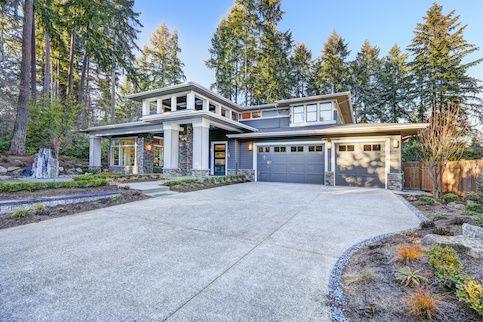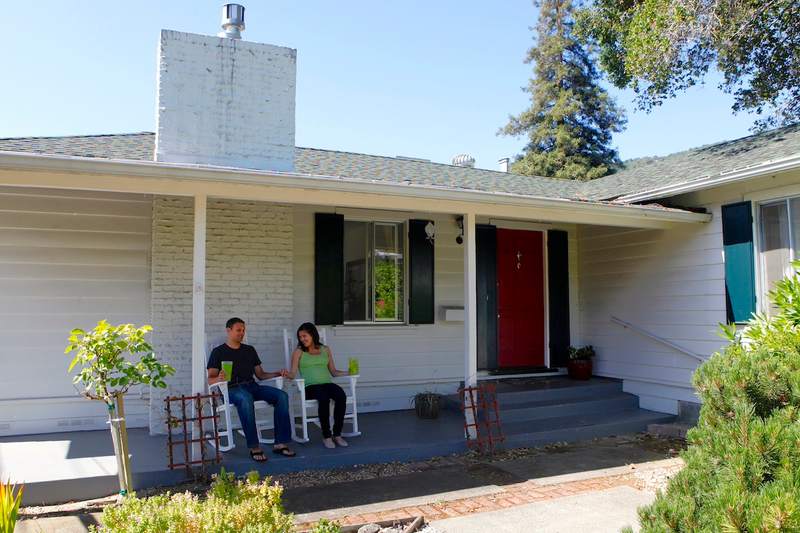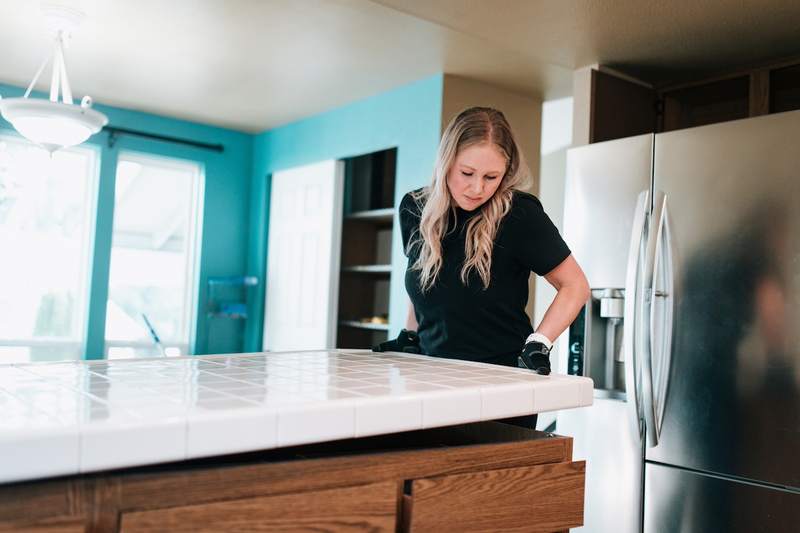If you’re moving into a new home, a bridge loan can provide extra cash to help smooth the transition.
Bridge loans solve financing problems by closing funding shortfalls, which can happen when a home buyer purchases a new home before they sell their current home.
Let’s dive deeper into how bridge loans work and whether this type of loan can help you keep your new home purchase on track.
What Is A Bridge Loan?
A bridge loan is a form of short-term financing that provides temporary cash flow when you don’t have the funds to make a large purchase. This financing option is commonly used in business to cover gaps while waiting for long-term financing. In real estate, borrowers typically use bridge loans to close the funding gap between buying and selling a home.
The ideal scenario for most home sellers is to sell their home and use money from the sale to buy their next home. But real estate transactions don’t always follow the script you envision. That’s where a bridge loan can come in and help.
A bridge loan can be a valuable tool to bridge a financial gap when you need a new home quickly, such as relocating for work.
What’s Your Goal?
Buy A Home
Discover mortgage options that fit your unique financial needs.

Refinance
Refinance your mortgage to have more money for what matters.
Tap Into Equity
Use your home’s equity and unlock cash to achieve your goals.
How Does A Bridge Loan Work?
Bridge loans typically last 6 months to 1 year. Lenders package these short-term loans in one of two ways to meet a borrower’s needs:
- Holding two loans: You borrow the difference between your existing mortgage balance and up to 80% of your home’s value. The funds from the bridge loan, or second mortgage, are applied to the down payment for the new home while you keep your existing mortgage on your current home. When you sell your home, you’ll use the sale proceeds to pay off the bridge loan and the existing mortgage.
- Rolling both mortgages into one: You take out one large loan for up to 80% of the combined value of your existing home and the new home you’re purchasing. You pay off the balance of your first mortgage and then apply the second toward the down payment on your next home.
Home buyers often turn to bridge loans to be able to submit a contingency-free offer on a new home. It allows them to say they can buy a house without selling their existing home.
A contingency-free offer is attractive in a seller’s market, where multiple buyers are likely bidding on homes. A seller will likely choose an offer without a home sale contingency because it means the buyer doesn’t need to sell their current house before the transaction can close.
With a bridge loan, you can make a 20% down payment and avoid private mortgage insurance (PMI). You pay PMI when you make less than a 20% down payment on a conventional mortgage, increasing your monthly mortgage payment. As a result, some homeowners use a bridge loan to avoid paying PMI.
Ready To Become A Homeowner?
Get matched with a lender that can help you find the right mortgage.
How To Get A Bridge Loan
The process of getting a bridge loan is relatively simple. You must:
- Find a lender offering bridge loans: Check with your local credit union and banks before exploring other options, such as nonqualified mortgage lenders or hard money lenders.
- Check the lender’s eligibility criteria: Every lender is different. Be prepared to provide the necessary documentation to prove your income and assets.
- Apply and complete the underwriting process: Some lenders allow borrowers to complete the application online. Others require borrowers to complete it by hand.
- Close on the loan: Before signing on the dotted line, review the loan’s final terms carefully, including the interest rate, repayment schedule and loan fees.
Bridge loans often have a faster application, approval and funding process than traditional home loans. You won’t have to wait as long to get the funds to buy your new home.
When you need a bridge loan, your debt-to-income ratio (DTI), loan-to-value ratio (LTV), credit history and FICOⓇ Score all matter. You’ll need a lot of equity in your current home to qualify. While lenders may allow you to borrow up to 80% of your home’s value, this won’t always be enough to cover your financing shortfall unless your home’s value has significantly appreciated since purchase or you’ve made a substantial dent in the principal balance of your existing mortgage.
Take The First Step To Buying A Home
Find a lender that will work with your unique financial situation.
The Cost Of Bridge Loans: Average Fees And Bridge Loan Rates
A bridge loan mortgage can be a handy option to get you out of a jam, but you’ll pay for the convenience.
Bridge loans typically have higher interest rates than conventional loans. Let’s look at what happens when a bridge loan’s interest rate is 2% higher than the rate on a standard fixed-rate mortgage.
On a $250,000 conventional loan with a 6% interest rate, you may pay $1,499 a month. A bridge loan with a 2% higher interest rate (8% total) would cost you $1,834 a month.
Bridge loans have a higher interest rate because they’re short-term. Lenders charge higher rates to compensate for the shorter repayment window.
Here are some bridge loan fees you should be aware of:
- Closing costs and related fees: Bridge loans require closing costs, much like a traditional mortgage. These expenses may include several fees, including administration fees, appraisal fees, escrow, a title policy and notary services.
- Origination fees: Your lender will determine your loan origination fee based on the amount you’re borrowing and the type of loan you take out. You’ll typically pay about 1% of the total loan amount.
While these fees may not seem substantial, they add up. And because mortgage bridge loans typically have terms of up to 1 year, you’ll likely pay these fees again when you secure a permanent mortgage on your new home.
How Much Can You Borrow On A Bridge Loan?
While terms will vary by lender, a bridge loan typically allows you to borrow up to 80% of the total combined value of your current home and your new home.
Alternatives To Bridge Loans
A bridge loan may be an appropriate solution when you want to buy a new home but still need to sell your existing home – but it’s not the only solution.
Here are some potential alternatives when a bridge loan doesn’t work for you:
Home Equity Line Of Credit (HELOC)
A home equity line of credit, also known as a HELOC, allows you to borrow money against the equity in your home. A HELOC works like a credit card. You can borrow from the line of credit up to your credit limit and only pay interest on the amount you use during the draw period.
While you may qualify for a lower interest rate than you would with a bridge loan, a HELOC may not be available once your house is on the market. Some lenders won’t approve a HELOC on a house for sale because it’s considered a less secure investment. A HELOC can be a valuable tool to finance home improvements, but it may not be suitable to bridge the gap between selling your current home and buying your new home.
Home Equity Loan
With a home equity loan, you borrow against the equity in your current home, using the home as collateral for the loan. The home equity loan term can last up to 20 – 30 years, depending on your lender, and often has a better interest rate than a bridge loan. However, you’ll have two mortgages to pay off if you take out a home equity loan.
Personal Loan
You may qualify for a personal loan with a solid credit history of on-time payments, a steady job and a credit score that meets the required minimum. Personal loans are typically unsecured, which means they don’t require collateral, and their terms and conditions vary by lender.
80-10-10 Loan
Also known as a piggyback loan, an 80-10-10 loan is a way to buy a new home without putting 20% down and avoiding PMI.
With an 80-10-10 loan, you pay 10% down and secure two mortgages: one for 80% of the new home’s price and the second for the remaining 10%. After selling your current home, you can use the proceeds to pay off the outstanding balance on your existing mortgage and potentially cover the smaller 10% mortgage on the new property.
Bridge Loan FAQs
So much about bridge loans depends on a borrower’s circumstances, so you may still have questions about them. We answer some frequently asked questions below.
The Bottom Line: Bridge Loans Are For Some People, Not Everyone
Financial products are never one-size-fits-all. Whether a bridge loan is right for you will depend on factors such as your finances, your living situation and the economy.
Always weigh the pros and cons of any loan before making any decision. Find a lender who’ll walk you through all your options and help you make the appropriate decision for you and your needs.

Tai Le
Tai Le is a longtime member of the editorial team at Quicken Loans, focused on supporting home buyers and homeowners as they navigate the process of getting a mortgage and refinancing. He works closely with experts to create relevant content for people seeking reliable financial information. Originally from Long Beach, California, Tai lived in Miami for many years before purchasing a home with his wife in the Tampa Bay area of Florida, which gave him a firsthand understanding of the challenges and decisions involved in the home buying journey. With extensive experience in personal finance, insurance and travel, Tai has also helped build notable brands like Carnival Cruise Line and LowerMyBills.












